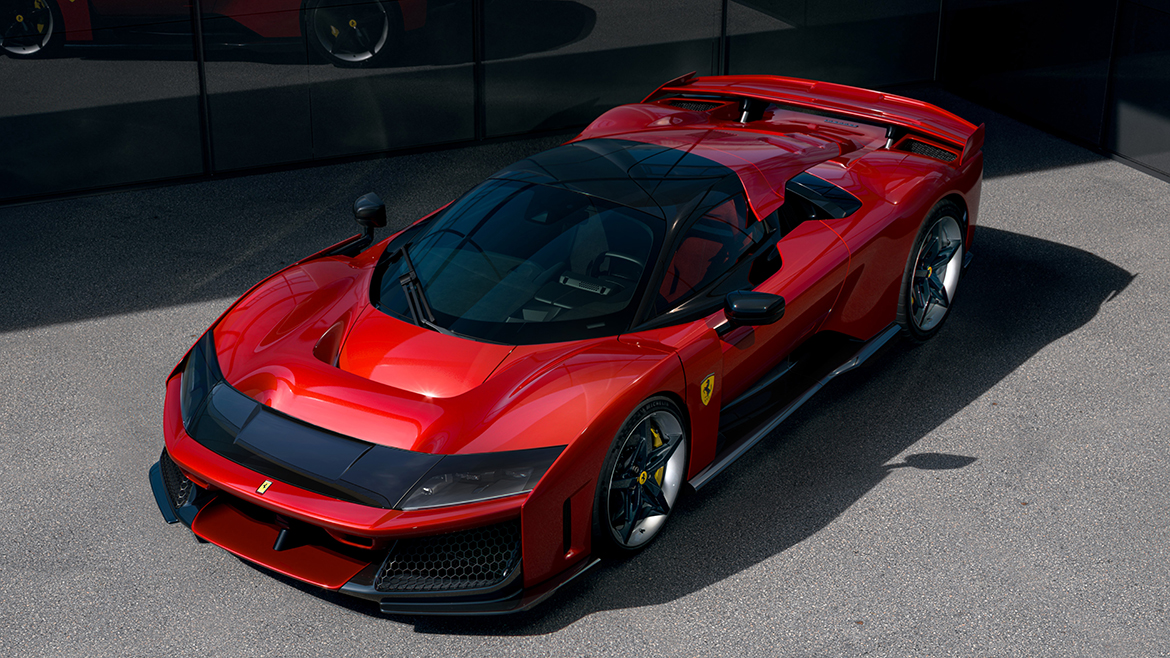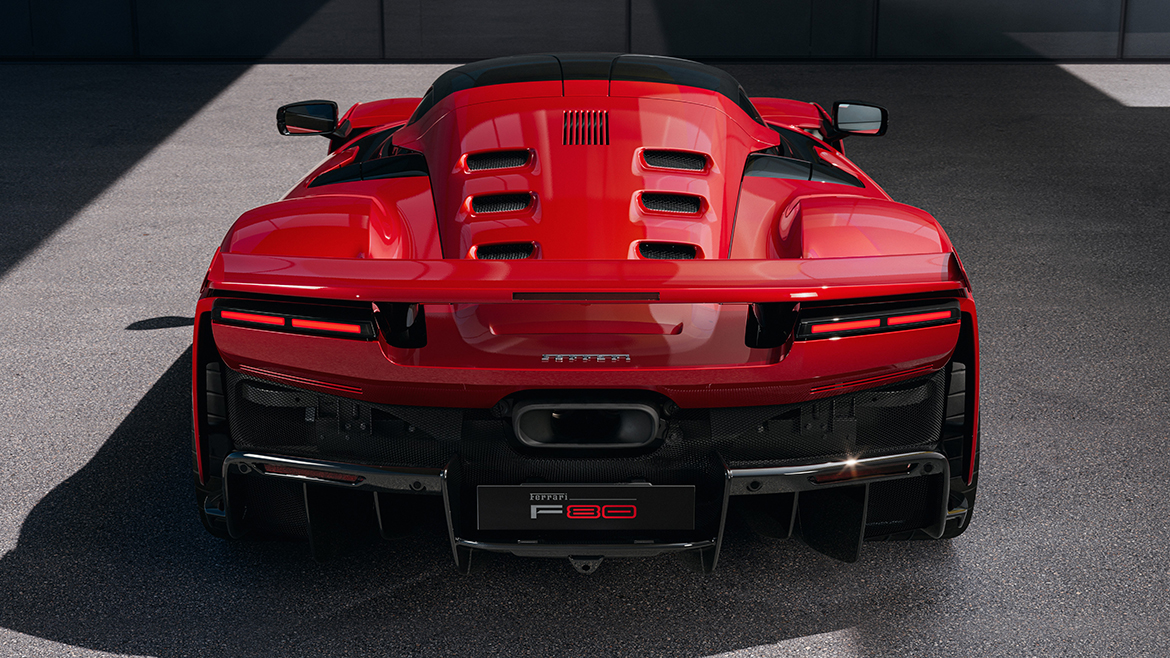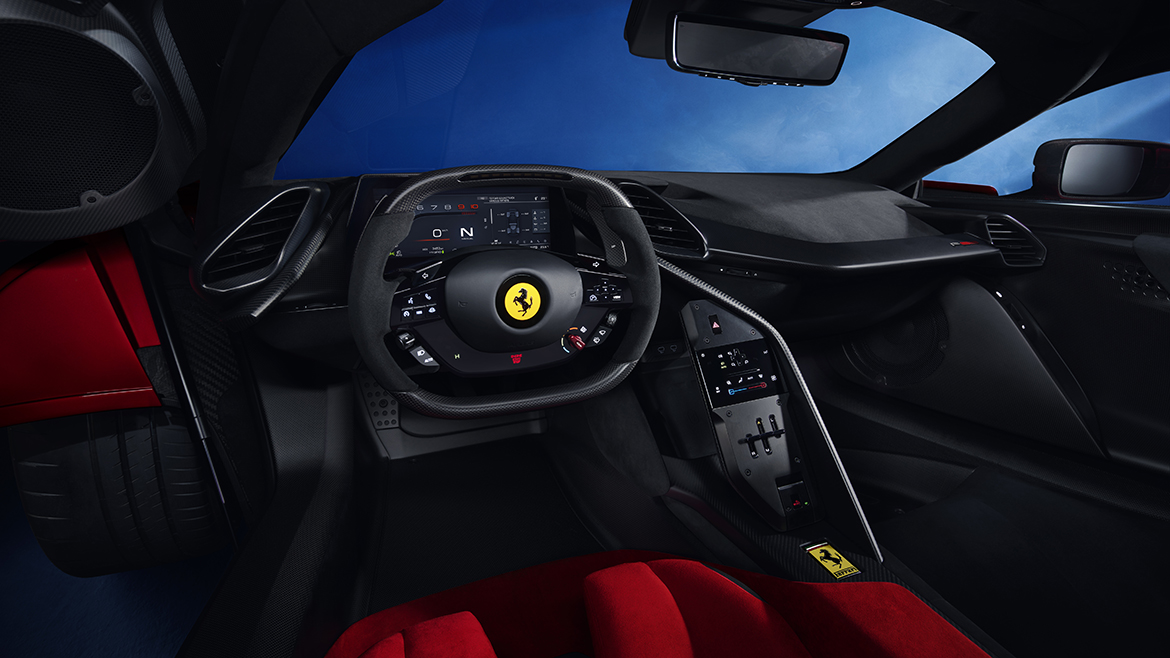It is not every day that you see a sculpture capable of travelling at 350 km/h. But when the pencils behind it are the hand of Flavio Manzoni and his team, we have now learnt that anything is possible. “With the Ferrari F80 we wanted to break all the codes. To go beyond, to create something unique,” says Manzoni, whom we meet in the e-Building in Maranello, the new factory designed by Mario Cucinella where the new Ferrari will be built from January. “Right from the first drawings four years ago, the intention was to create a car that would refer to futurism, that would also be a manifesto of Ferrari’s new stylistic canons: we left the human dimension behind to move towards something more avant-garde inspired by aeronautics: an UFO on wheels”. The F80 belongs to the Supercar category, the one that at Maranello translates into prestige and sportiness: 799 examples produced, 3.6 million euro price tag, and a decidedly cumbersome legacy given that its ancestors are called the LaFerrari, Enzo, F50, F40 and 288 GTO. An ideal model, then, for experimenting with new ideas, designed with the intention of remaining immortal.
“Aerodynamics was at the heart of the project right from the start, we even wanted to try to make a single-seater for the road, but by reasoning with engineering and marketing we were able to tighten the seats thanks to a cabin completely oriented towards the driver. So we saved 50 millimetres and exploited all the space we could,” Manzoni continues. The result is in front of our eyes: the F80 resembles a flying saucer with a cockpit that is perfectly set into the body of the car and 50 millimetres more compact than that of the LaFerrari. As with all the latest-generation Ferraris, the combination of the body-coloured upper part and the painted carbon-fibre lower part allows the design of the car to be enhanced, revealing the technical functions in the background.
On the F80, an attempt was made to avoid an anthropomorphic effect of the car’s front end: the front headlights are concealed inside a visor, a sort of black screen with both aerodynamic and optical functions that makes the F80 particularly original. The rear end, characterised by the truncated tail theme, features two configurations: one with the wing retracted and the other with the wing raised. The light clusters are set inside a double layer, composed of the transom and spoiler, with the idea of creating a sandwich effect that gives the rear a very sporty character in both configurations. Speed is taken care of by the Formula 1 V6 turbocharged engine with 1,200 horsepower, 900 thermal and 300 electric, combined with an 800 volt hybrid system.
The functions have been resolved from a design point of view to create a perfect relationship between performance and form. Some of them, related to thermal and aerodynamics, have been integrated in a very characterising way: for example, the channel that channels air towards the engine intake and side radiators in the “NACA” style is an iconic element, as well as functional, and defines one of the most original styling themes of the flanks. Another functional element, but one with a strong symbolic value, is represented by the air vents on the dorsal: six slits, equal to the number of cylinders of the combustion engine, define an unexpected relationship between the precise, geometric lines and the plastic surfaces of the car.
The F80 also has a new steering wheel with crown geometry reduced by 70 mm in the vertical axis to increase visibility and a sporty feel while driving. “A new shape that allows a good view of the cluster in all positions and does not encumber the driver in any way. Safety remains paramount, even more so when travelling at the supersonic speeds that this F80 is capable of reaching,” Manzoni concludes.















